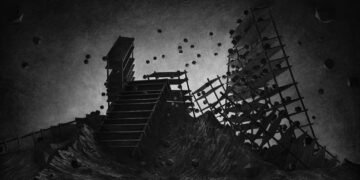“compiled:Sophia Bennett”
In the world of death care, reputation is currency. Families hand over their most fragile moments to funeral directors, trusting them to preserve dignity and respect. But in Pasadena, California, that trust was grotesquely violated by the Lamb-Sconce family — the operators of what would become the epicenter of one of the most horrifying funeral scandals in American history.
The Rise of a “Christian” Funeral Empire
The Lamb Funeral Home once stood as a beacon of old-fashioned values in Pasadena. Founded by Lawrence Lamb, its blend of Christian ethics and family pride earned the trust of grieving families. But by the early 1980s, the business had passed to his grandson, David Sconce — and with him came a chilling new agenda.
As cremation grew in popularity, Sconce offered steeply discounted services not just to his own clients but also to dozens of other local mortuaries. What few knew was how he managed to offer prices so low.
Behind the scenes, Sconce was mass-incinerating bodies — 150 to 200 at a time — in order to maximize profit. Ashes were randomly scooped and distributed to families who believed they were receiving the remains of a single loved one.
Gold Teeth, Broken Bones, and Ashes by Weight
Former employees would later testify to gruesome practices: limbs broken to fit into cremation chambers, corpses stripped of valuables, and remains sorted by weight categories — adult, child, infant — in a filing cabinet.
In HBO’s chilling docuseries The Mortician, Sconce was captured on audio joking about extracting gold teeth from bodies and keeping them in a cup marked “Au.” He allegedly sold the gold for profit. “That’s not a person anymore,” he said in one taped interview, explaining his detached view of the deceased.
Suspicion, Stench, and a Kiln in the Desert
The operation might have continued indefinitely — if not for a WWII veteran who lived near Sconce’s off-site cremation facility. He recognized the foul smell in the air as something he hadn’t sensed since Auschwitz. He called 911.
Authorities discovered a ceramics kiln used to cremate bodies in mass batches. The sheer scale was staggering: in 1982, the Lamb Funeral Home reported 194 cremations. Just four years later, that number skyrocketed to over 25,000.
Competitors had already grown suspicious. Sconce’s turnaround time and rates defied industry norms. Once the numbers no longer added up, law enforcement launched a full investigation.
Not Just the Dead: Allegations of Violence
But what investigators found went beyond cremation fraud. Sconce was accused of orchestrating attacks on rival funeral directors, including one who died under mysterious circumstances after reporting threats.
Another employee who reportedly sought to leave the business died by suicide — a death some believe was linked to internal pressure or knowledge of the operation.
While not all allegations led to convictions, the cloud of fear, intimidation, and death that surrounded Sconce’s business made one thing clear: this was no isolated crime. Multiple sources claim the entire Lamb-Sconce family was complicit, with David’s mother allegedly helping manage and divide the mishandled ashes.
Conviction, Release — and a Haunting Legacy
In 1989, David Sconce pleaded guilty to charges including mutilation of corpses and illegal cremation practices. He was sentenced to five years in prison and served less than three. A violation of his lifetime probation landed him back behind bars in 2013, but he was quietly released again in 2023.
His story — once buried in court records and grieving family testimonies — resurfaced in full public view through The Mortician, which aired this spring on HBO. The series has reignited public outrage and renewed calls for stricter oversight of the death care industry.
Reforms Born from Grief
The Lamb-Sconce case became a catalyst for funeral reform in California. Today, state law mandates random inspections of crematoriums, bans unauthorized removal of gold or valuables from bodies, and requires clear tracking of remains.
But those laws came too late for thousands of families who were robbed of closure, dignity, and truth.
In the end, The Mortician’s tale is not just one of criminal greed — it’s a story about the fragile line between trust and betrayal, and the damage that lingers when the dead are treated as profit instead of people.










































